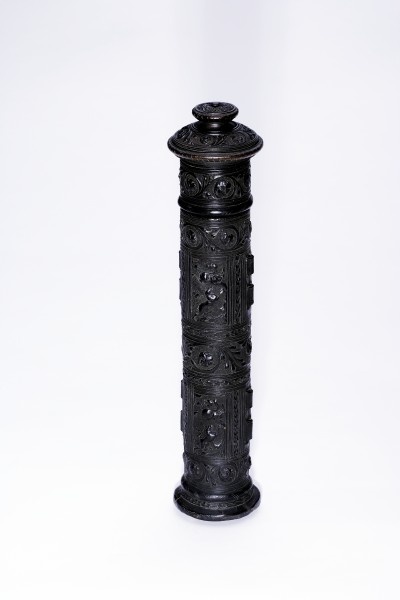Dieses hohe und sehr schmale Futteral besteht aus einem gedrechselten Holzkern, der mit Leder bezogen wurde. Die plastischen Dekorationen entstanden durch Schneiden und Prägen des angefeuchteten Leders, das anschließend poliert wurde. Die Aufteilung in Ornamentbänder aus floralen Ranken und Feldern mit jagenden Tieren ist typisch für diese in Norditalien hergestellten Futterale. Durch die seitlichen Ösen wurden Schnüre gezogen, die ebenso zum Tragen wie als Verschluss dienten.
Ankauf 1886. Ehemals Sammlung Eugen Felix, Leipzig. Ursprünglich Besitz des Federico Ubaldini, Graf von Urbania.
en

